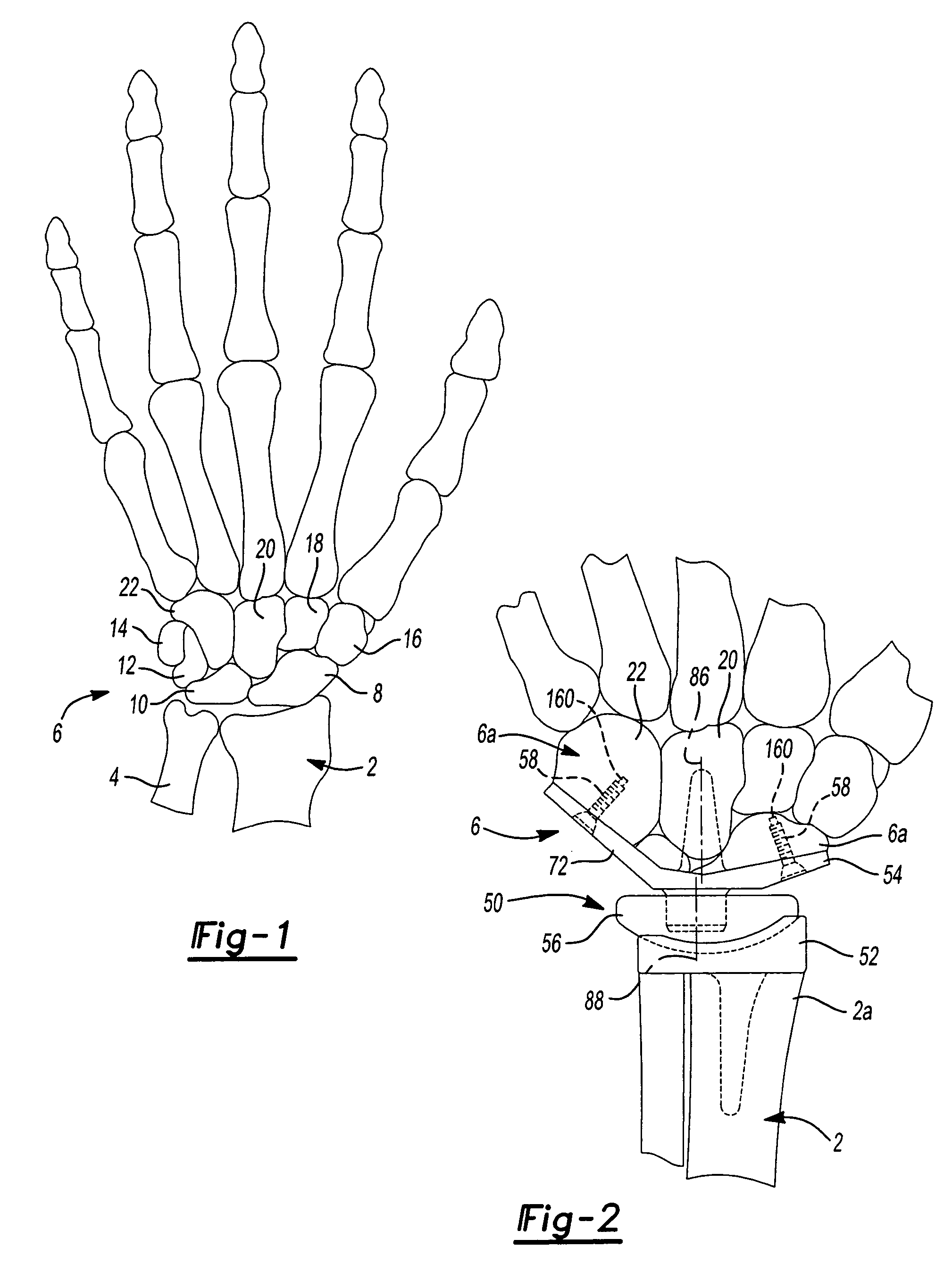Method and apparatus for wrist arthroplasty
a wrist arthroplasty and wrist technology, applied in the field of prosthetic wrist implants, can solve the problems of patient discomfort, pain and difficulty in moving the wrist, patient without wrist motion, and severe restrictions on the use of the wris
- Summary
- Abstract
- Description
- Claims
- Application Information
AI Technical Summary
Benefits of technology
Problems solved by technology
Method used
Image
Examples
sixth embodiment
[0102]A sixth embodiment is illustrated in FIGS. 13 and 14, and illustrates an alternately constructed radial implant 52e, wherein the bearing guide 62e is formed with an arcuate shape that is configured to matingly engage the curvilinear cut 300 of a resected radius 2a′. Those skilled in the art will appreciate that the curvilinear cut 300 will support the bearing guide 62e and thereby permit the radial implant 52e to be formed with a relatively lower profile as compared to the radial implant 52.
seventh embodiment
[0103]A seventh embodiment is illustrated in FIG. 15, wherein the prosthetic wrist 50f is illustrated to be generally similar to the prosthetic wrist illustrated in FIG. 8, except for the shape of the flange structure 200f and the wrist bearing component 56f. More specifically, the flange structure 200f includes a generally V-shaped interconnecting flange 84f to which the ulnar and radial flanges 72f and 74f, respectively, are oppositely coupled. As will be apparent to those skilled in the art, the wrist bearing component 56f is contoured to matingly engage the proximal side of the flange structure 200f and accordingly includes a generally V-shaped profile 400. In a manner that is similar to the prosthetic wrist of FIG. 8, the stem 80f includes a threaded end portion 220 that is threadably received into a threaded aperture 232 that is formed in the wrist bearing component 56f.
eighth embodiment
[0104]An eighth embodiment is illustrated in FIG. 16, which is similar to the prosthetic wrist of FIG. 8 except for the flange structure 200g. The flange structure 200g of the prosthetic wrist 50g includes an interconnecting flange 84g with an interconnecting bone abutment surface 90g with a plurality of portions 500 that are each defined by a skew angle. The skew angles that define each portion 500 need not be symmetrical about the stem axis 86g. The skew angle of each portion 500 is less than 90 degrees in magnitude to permit the interconnecting flange 84g to conform and abut the proximal end of the distal portion 6a (FIG. 2) of the carpal bone complex 6 (FIG. 2).
PUM
 Login to View More
Login to View More Abstract
Description
Claims
Application Information
 Login to View More
Login to View More - R&D
- Intellectual Property
- Life Sciences
- Materials
- Tech Scout
- Unparalleled Data Quality
- Higher Quality Content
- 60% Fewer Hallucinations
Browse by: Latest US Patents, China's latest patents, Technical Efficacy Thesaurus, Application Domain, Technology Topic, Popular Technical Reports.
© 2025 PatSnap. All rights reserved.Legal|Privacy policy|Modern Slavery Act Transparency Statement|Sitemap|About US| Contact US: help@patsnap.com



